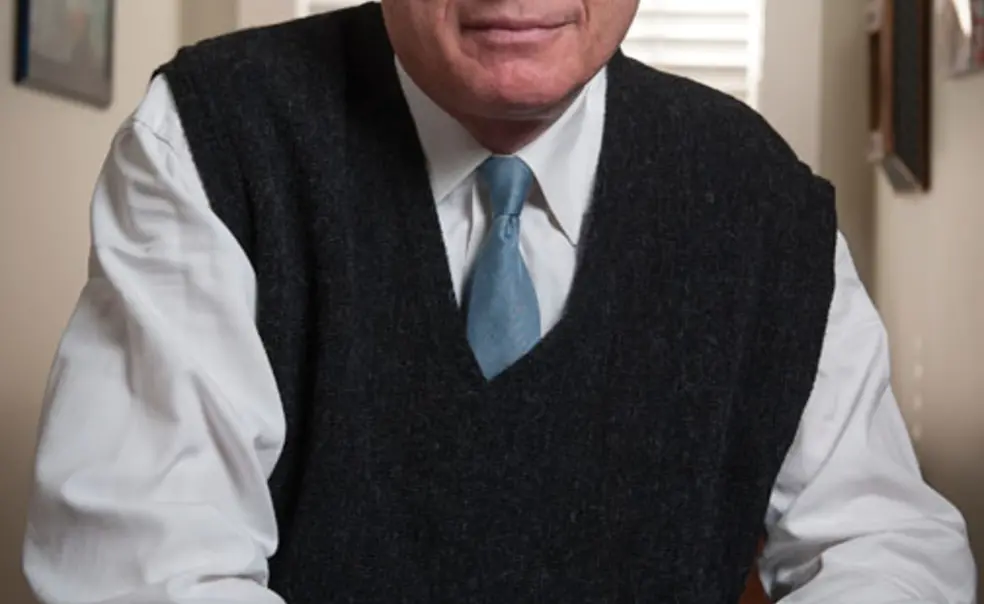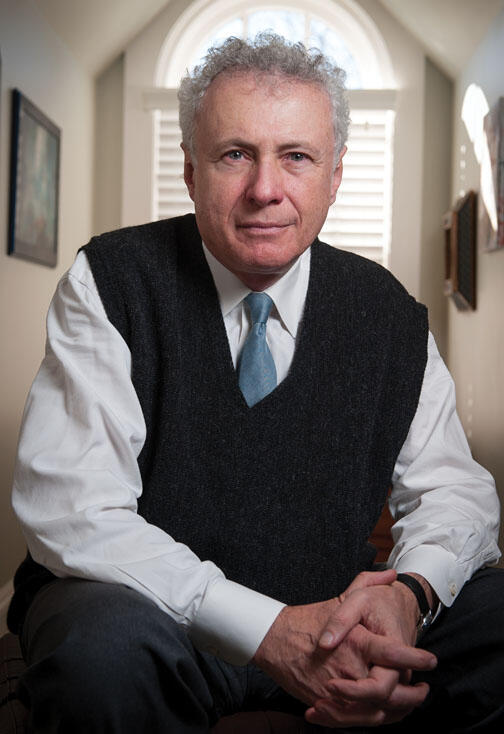Harold J. Bursztajn ’72, on mental-health care
Harold J. Bursztajn ’72, an associate clinical professor of psychiatry at Harvard Medical School, co-founded Harvard’s Program in Psychiatry and the Law. Bursztajn (pronounced “Burshtain”) specializes in psychiatric diagnosis, suicide prevention, and “autopsies” of psychiatric cases — in which clinicians explore “what feelings overwhelmed the patient and what motives drove the patient to find life insufferable, and, as a result, to commit suicide or homicide.” The goal, he explained, is to understand how such feelings could have been identified and treated.
In his work, Bursztajn says, he has been influenced by the experience of his father, a Holocaust survivor and member of the Jewish resistance in the Lodz ghetto in Poland (as was his mother). On two occasions, his father was treated by doomed Jewish doctors: once after being tortured in a Nazi jail, and again after he was shot in the leg while retrieving cement to build an underground bunker for the resistance in Lodz. “The ability to make contact with humans in the midst of despair is fundamental to the practice of medicine,” Bursztajn says. “So is the ability to find some measure of hope in what seems to be a hopeless situation.”
PAW spoke with Bursztajn in December, about two weeks after the shooting at Sandy Hook Elementary School in Newtown, Conn.
What are your thoughts in the wake of Newtown?
One of the aphorisms I keep in mind is that humans are capable of far better and far worse than you can imagine. The horror of what happened in Newtown — the grief of the families that lost their loved ones — is very difficult for us to imagine. And yet in the clinical and forensic world, we too often do stare into the heart of darkness.
Is it important to find out what motivated the shooter?
It’s important to reconstruct his motivations. Unless you understand his motivation, you won’t have a model to generate the red flags we need to help prevent cases.
What is known about patterns of mass shooters?
What we generally see is people becoming more depressed, psychotic, and delusional, and more isolated and more marginalized.
But when a person is suffering with mental illness, the likelihood of violence may or may not be foreseeable, and if it’s foreseeable, it may not be preventable. Absolute foreknowledge is an illusion.
What should be done to improve the U.S. mental-health system?
In other countries that have a comprehensive mental-health system, medical costs go down. In the U.S., the system is fragmented and underfunded. There needs to be a safety net as well as institutions that allow people who are overwhelmed to find comprehensive treatments.
The major problem in the U.S. is that mental-health care tends to be marginalized — it’s seen much more as a luxury than a necessity. The reimbursement system causes many institutions to prefer to provide high-tech and highly reimbursable medical care rather than the labor-intensive, poorly reimbursable mental-health services that are needed. There is also a misperception that mental-health care means simply prescribing medications that promise a quick fix.
What cases do you find are the most difficult to treat?
Cases where there is great suffering, but also a lack of resources, whether financial or social or emotional: people who are institutionalized, who can’t help themselves, children, people who are seriously and chronically mentally ill, the elderly, people suffering from dementia. These people are often marginalized, and their cases can be very, very difficult, especially when they have a lack of social support.
What signs should you look for if you’re concerned about someone’s well-being?
A pattern of suffering and a preoccupation with violent play. Isolation itself should be a red flag. If someone is becoming more and more isolated, there needs to be an attempt to reach out. You have to be aware of the shame and humiliation that accompanies depression as it begins to descend.
— Interview conducted and condensed by Louis Jacobson ’92












No responses yet